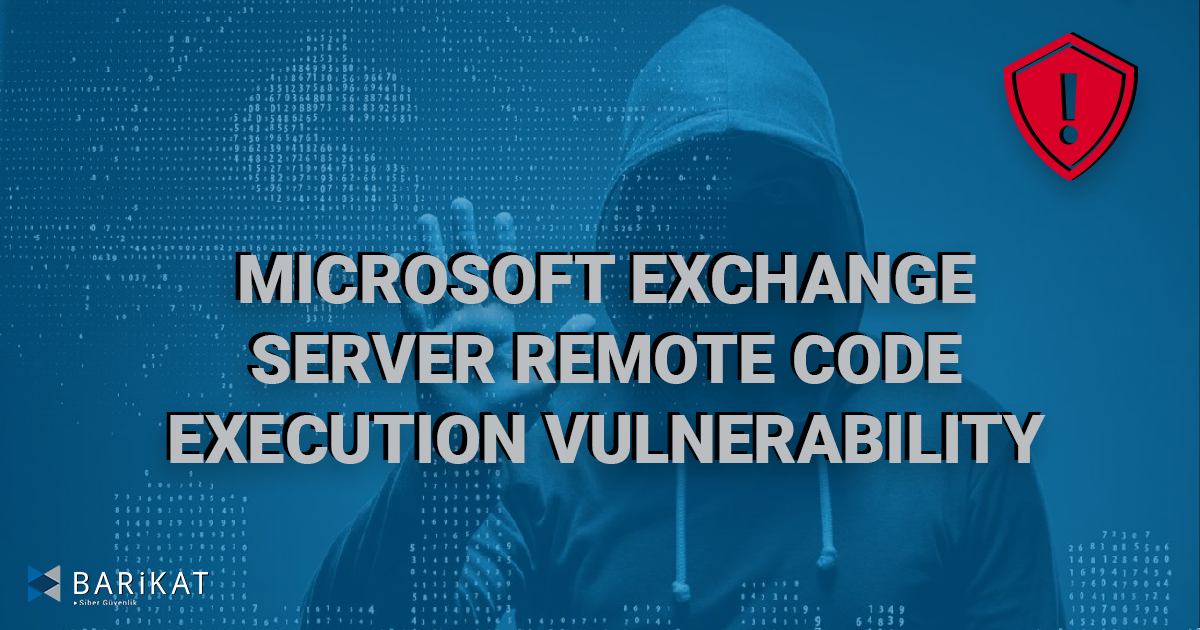Microsoft Exchange Server Remote Code Execution Vulnerability
One high* level Microsoft Exchange Server Remote Code Execution Vulnerability with a CVSS 3.1 score of 8.8 was released.

An attacker who successfully exploits this vulnerability can run arbitrary code in the context of the system user. The exploitation of this vulnerability requires an authenticated user in a certain exchange role to be compromised. Even though no exploit regarding this vulnerability has been discovered, due to its severity/criticality, it is highly recommended that the following patches are downloaded to ensure the safety of systems/assets (The analysis by NIST is still ongoing; CVSS 3.1 score may eventually go up).
Affected Systems
The following servers/systems are affected by these vulnerabilities;
- Microsoft Exchange Server 2019 Cumulative Update 11
- Microsoft Exchange Server 2016 Cumulative Update 22
- Microsoft Exchange Server 2019 Cumulative Update 10
- Microsoft Exchange Server 2016 Cumulative Update 21
- Microsoft Exchange Server 2013 Cumulative Update 23
IoC’s
-
Recommended Solution(s)
Organizations using the following products are recommended to download the patches in the table below.
| Product | Article | Patch |
|---|---|---|
| Microsoft Exchange Server 2019 Cumulative Update 11 | 5012698 | Security Update |
| Microsoft Exchange Server 2016 Cumulative Update 22 | 5012698 | Security Update |
| Microsoft Exchange Server 2019 Cumulative Update 10 | 5012698 | Security Update |
| Microsoft Exchange Server 2016 Cumulative Update 21 | 5012698 | Security Update |
| Microsoft Exchange Server 2013 Cumulative Update 23 | 5010324 | Security Update |
CVE / CWE
CVE-2022-23277
Related Website(s)
- https://nvd.nist.gov/vuln/detail/CVE-2022-23277
- https://msrc.microsoft.com/update-guide/en-US/vulnerability/CVE-2022-23277
* Vulnerabilities with a CVSS 3.1 score between 7.0 and 8.9 are evaluated to be “high” whereas vulnerabilities with a CVSS 3.1 score between 9.0 and 10.0 are evaluated to be “critical”.
Current Security Vulnerability Reports
İSTANBUL
+90 216 504 53 32
Aydınevler Mahallesi,İsmet İnönü Cadddesi,Küçükyalı Ofis Park A Blok,No:20/1 Maltepe İstanbul
ANKARA
+90 312 235 44 51
VULNERABILITY NEWSLETTER
You can register to our newsletter on the home page to be instantly informed about security vulnerabilities.
